Tea
Tea, one of the oldest known beverages, originated in China, with the word “tea” derived from the Chinese Fukien dialect term t’e.
It was introduced to Europe by the Dutch, and known as Ch’a in Cantonese—a name that spread to Japan, India, Russia, Iran, and the Middle East. The use of tea began around the 6th century, and botanically, it belongs to the genus Camellia of the Camellia sinensis family.
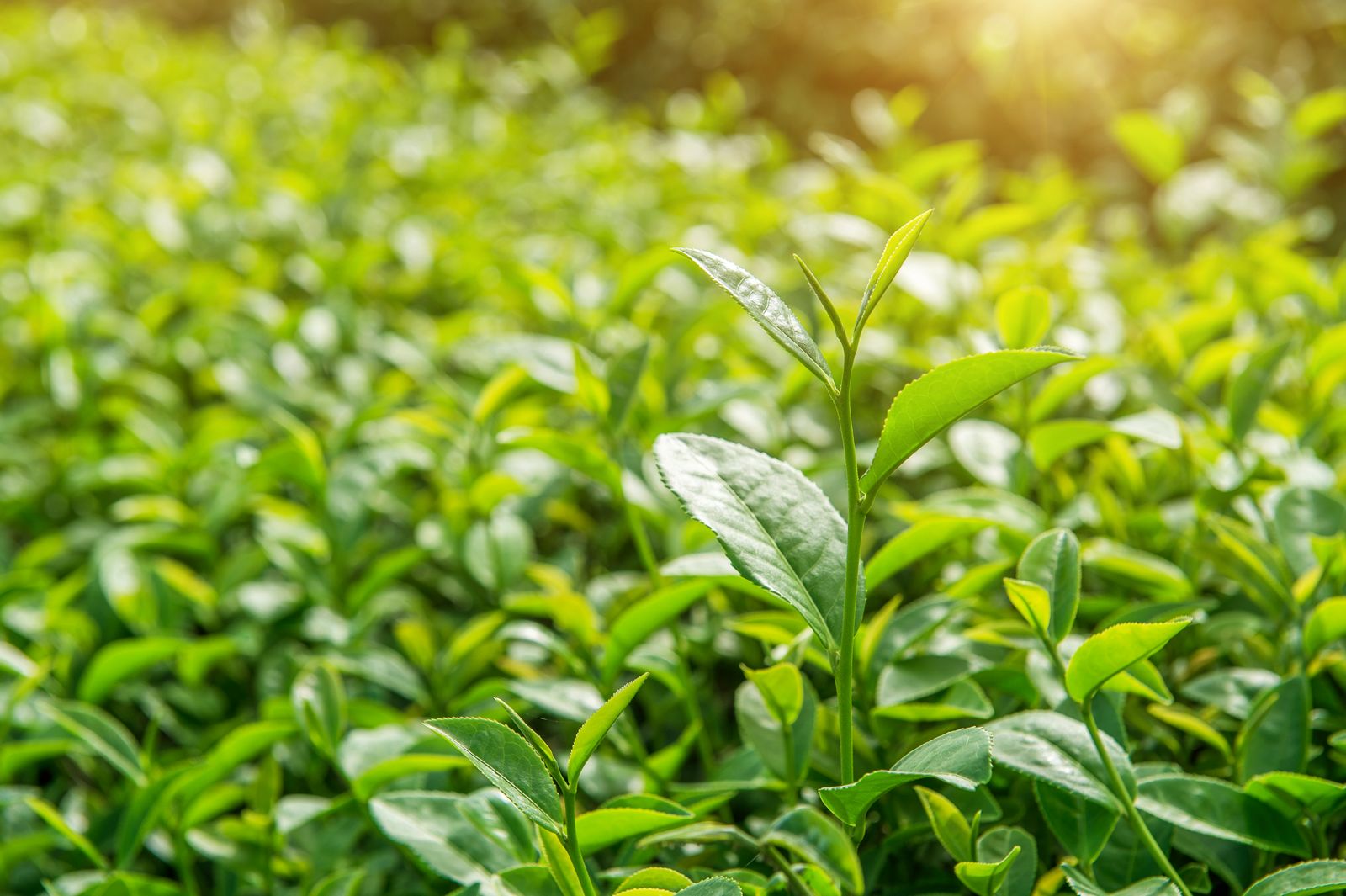
Brought to India by the British from China, tea has since become deeply rooted in Indian culture. Today, India has over 1,585 tea gardens employing more than 1.1 million people. India is the second-largest producer of tea globally and the largest consumer, with about three- fourths of its production consumed domestically.
Renowned worldwide, Indian tea stands out for its rich flavor, supported by geographical indications, advanced processing, continuous innovation, and strategic market expansion.
Climatic Requirement
Tea cultivation in India varies by region, with climate influencing flavour and quality. Assam tea grows in warm, humid lowlands with heavy rainfall, yielding a strong, malty flavour. Darjeeling and Sikkim teas thrive in cool, high-altitude climates with good rainfall, producing delicate, floral notes. Nilgiri tea benefits from a tropical climate with mild temperatures and steady rain, offering a smooth taste. Kangra tea, from the western Himalayas, prefers a temperate climate with cool winters and moderate rainfall, resulting in a subtle, aromatic brew.
Soils
Tea production in India flourishes in well-drained, acidic soils, ideally within a pH range of 4.5 to 5.5. Several key soil types are particularly suitable for tea cultivation across different regions.
Key suitable soil types across regions include organic-rich loamy soils (Assam, Darjeeling), well-drained lateritic soils (Kerala, Tamil Nadu), high-yielding alluvial soils (Assam floodplains), and red soils (Tamil Nadu, Karnataka), which need fertility and structure improvements.
Regardless of the specific soil type, good soil aeration, drainage, and high organic content are crucial for ensuring healthy and productive tea growth.
Sowing Time & Methods
Tea is typically propagated through cuttings rather than seeds to ensure uniformity and quality. The best time for planting tea is during the monsoon season, from June to September, when there is adequate soil moisture. Cuttings or young tea plants are usually planted in well-prepared nursery beds or directly in the field, spaced about 1.2 to 1.5 meters apart to allow for proper growth and plucking. The soil should be well- drained, acidic (pH 4.5 to 5.5), and rich in organic matter. Shade trees are often planted alongside to protect young tea plants from direct sunlight and to maintain humidity.
Growing States
The main tea-growing regions are in the Northeast (including Assam) and in north Bengal (Darjeeling district and the Dooars region). Tea is also grown on a large scale in the Nilgiris in south India.
Varieties
India offers high-quality specialty teas, such as Darjeeling, Assam Orthodox and the high-range Nilgiris, which have a distinctive aroma, strength, colour and flavour. Unlike many other teas producing and exporting nations, India has a manufacturing base for both CTC and orthodox tea in addition to green tea. India is one of the largest producers of tea in the world, offering a variety of distinct types, each with unique characteristics:
- Assam Tea:
Grown in the Northeastern State of Assam, this tea is known for its bold, brisk flavour and deep amber colour. It’s a strong, malty black tea, often used in breakfast blends like English Breakfast. - Darjeeling Tea:
Produced in the Darjeeling region of West Bengal, it is often referred to as the “Champagne of Teas.” Darjeeling tea has a delicate, floral aroma with a muscatel flavour. It is available in black, green, white, and oolong varieties. - Nilgiri Tea:
Cultivated in the Nilgiri Hills of Tamil Nadu, this tea has a fragrant aroma, smooth taste, and bright colour. It’s typically used in blends and iced teas due to its strong flavour and colour. - Kangra Tea:
Grown in Himachal Pradesh, Kangra tea includes both green and black varieties. It is known for its subtle flavour, light colour, and a hint of floral aroma, somewhat similar to Darjeeling tea. - Sikkim Tea:
Produced in the Temi Tea Garden in Sikkim, this tea combines the floral notes of Darjeeling with a richer body, offering a balanced and aromatic brew.
Each region’s unique climate and terrain contribute to the distinctive taste and aroma of its tea.
Water Management
Tea cultivation in India relies heavily on natural rainfall, ideally 150–350 cm annually. However, during dry spells, supplementary irrigation like sprinkler or drip systems is used to maintain soil moisture. Proper drainage is also essential to prevent waterlogging, which can damage roots and reduce yield.
Weed Control
Weed control is essential in tea plantations to reduce competition for nutrients, water, and sunlight. Common weeds in Indian tea gardens include Cyperus rotundus (nut grass), Ageratum conyzoides, Imperata cylindrica, and Mikania micrantha. Weed management involves a combination of manual weeding, mulching, and chemical control. Common herbicides used include glyphosate for broad-spectrum control, 2,4- D for broadleaf weeds, and paraquat for quick knockdown of green growth. Regular monitoring and integrated weed management help maintain plant health and productivity.
Glimpses from Our Social Media Posts
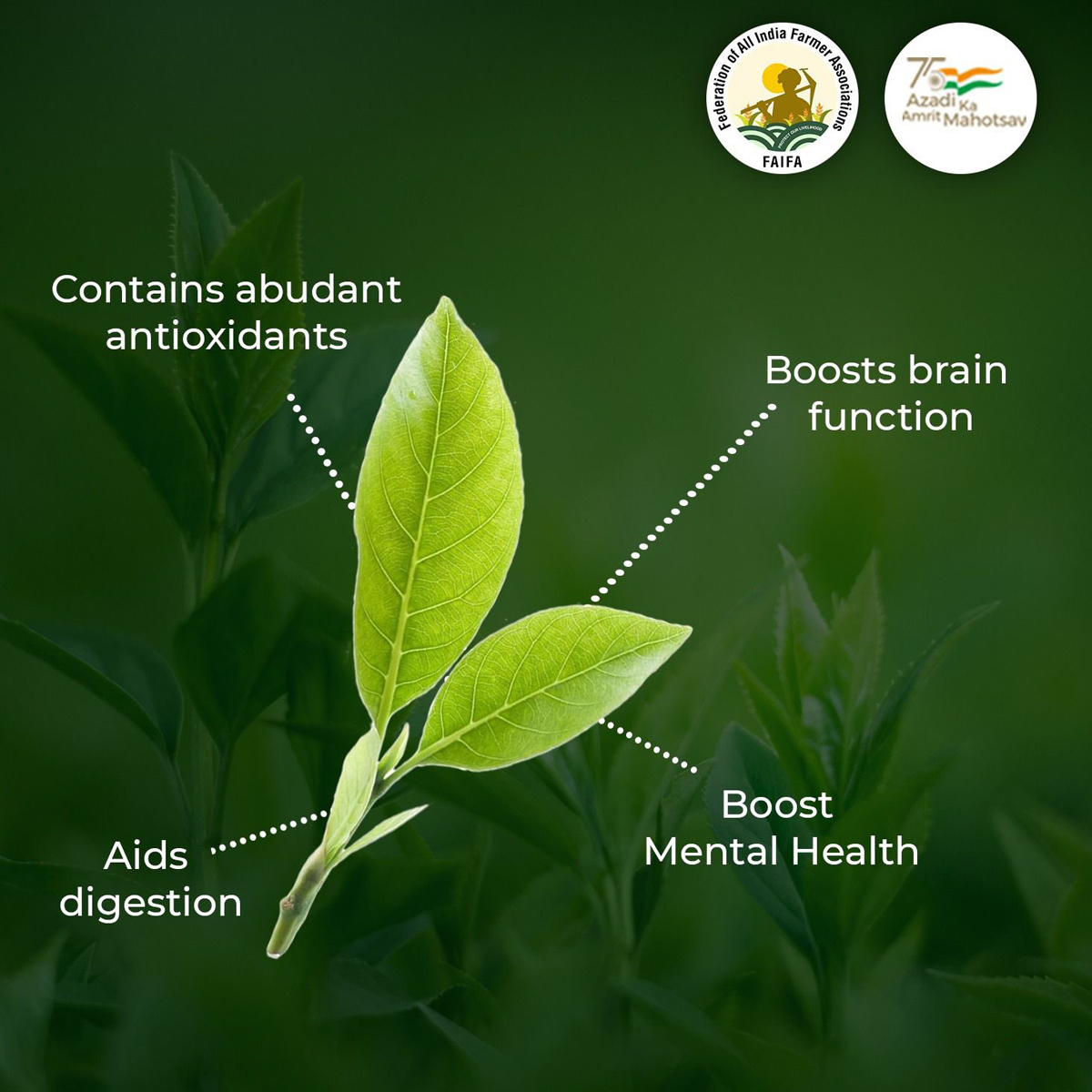
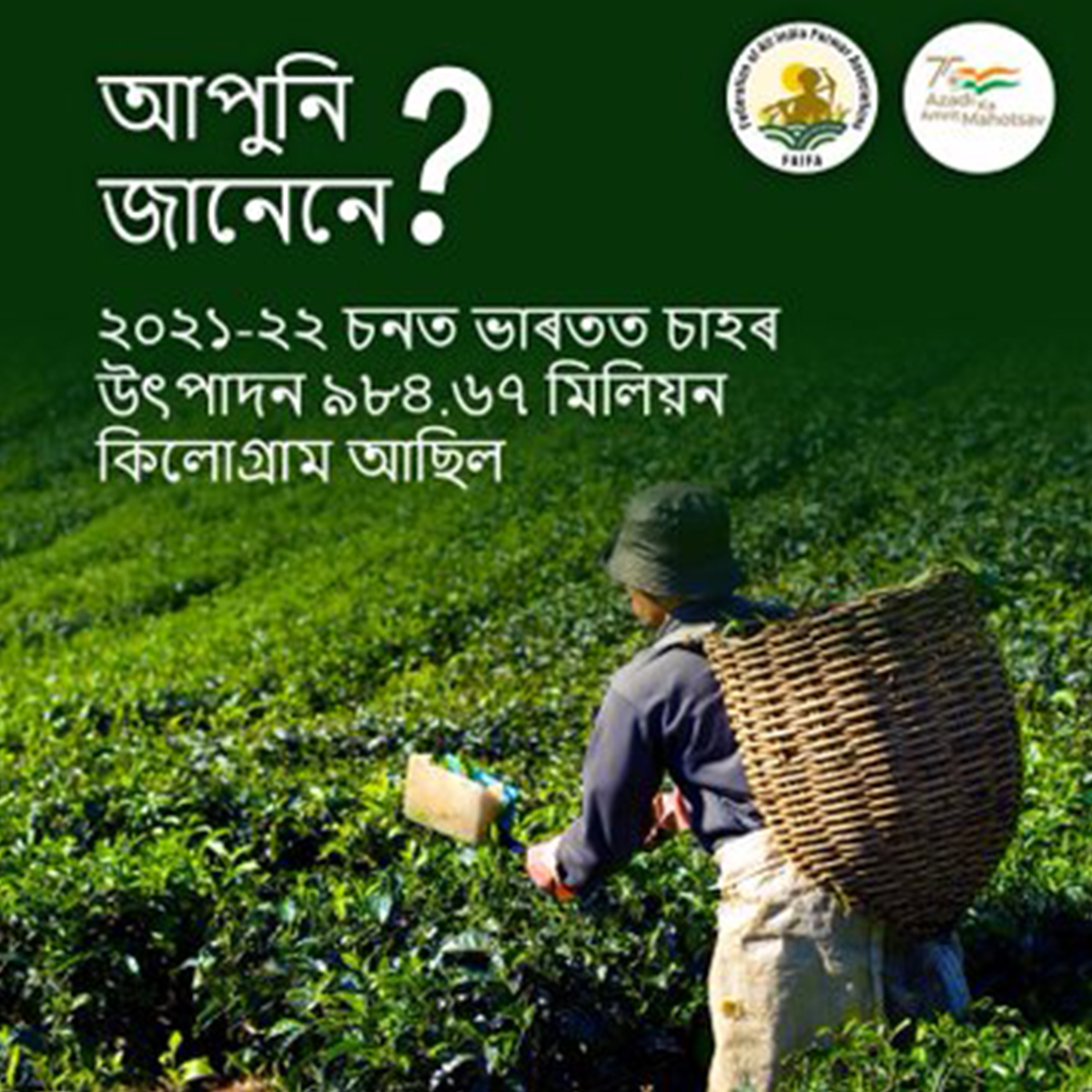
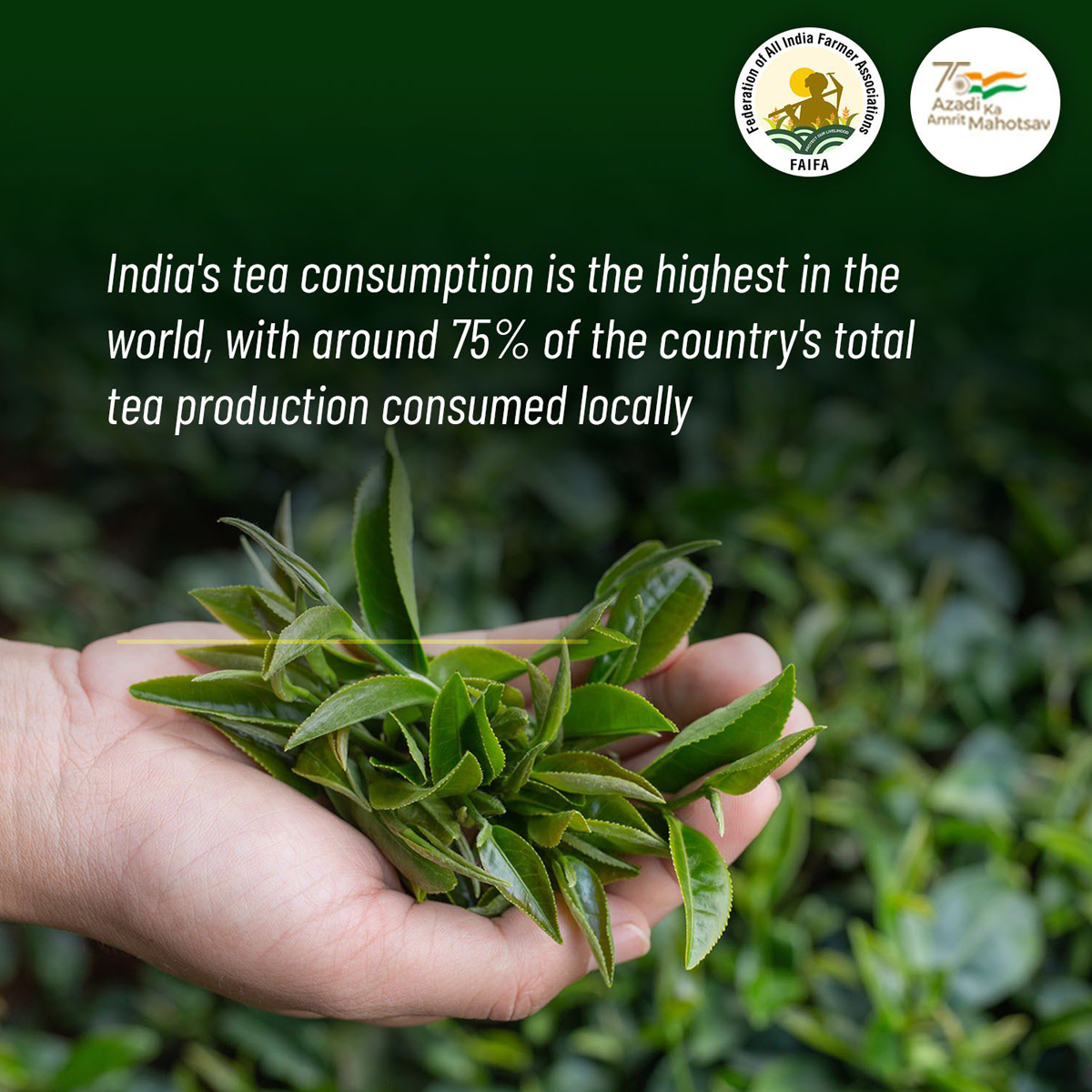
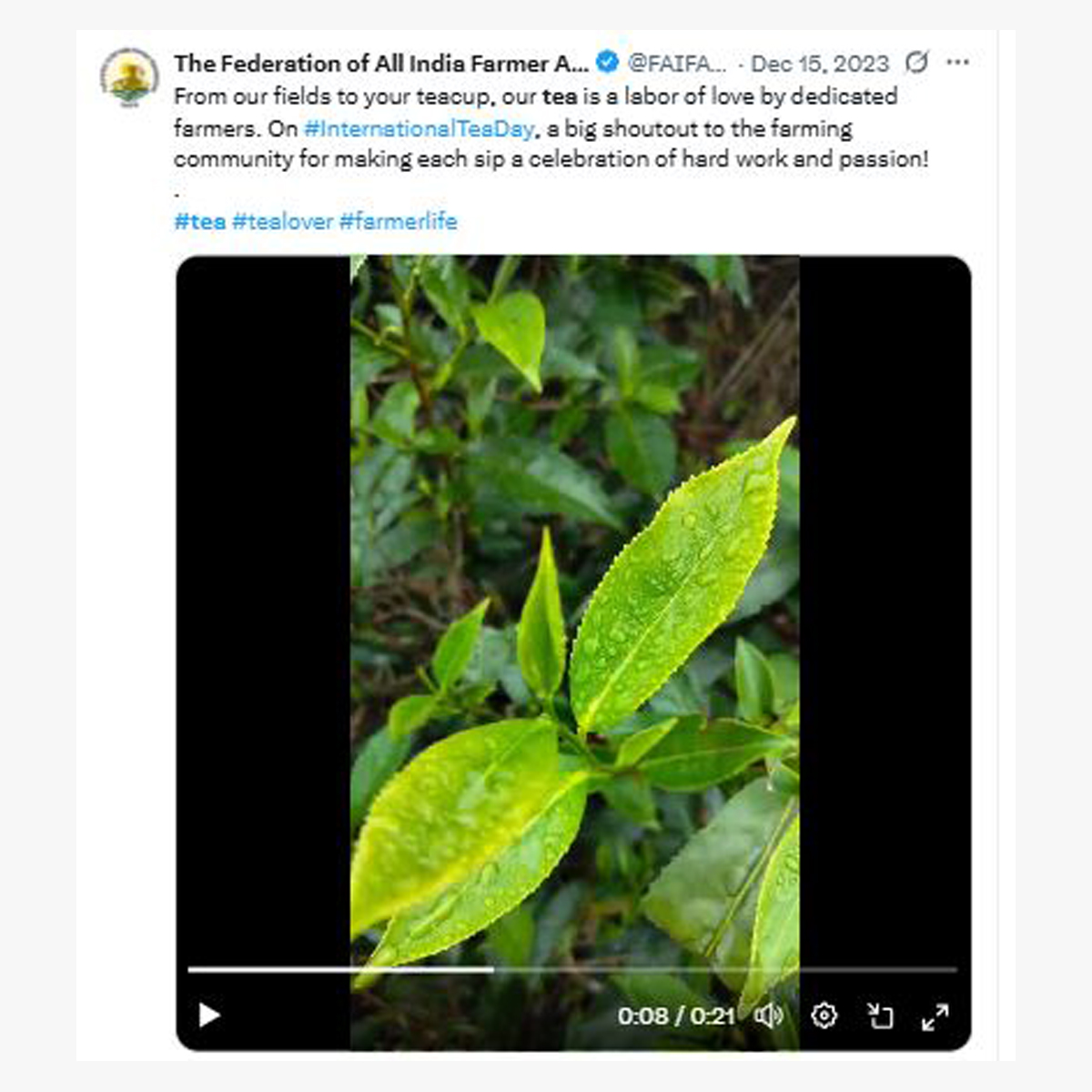
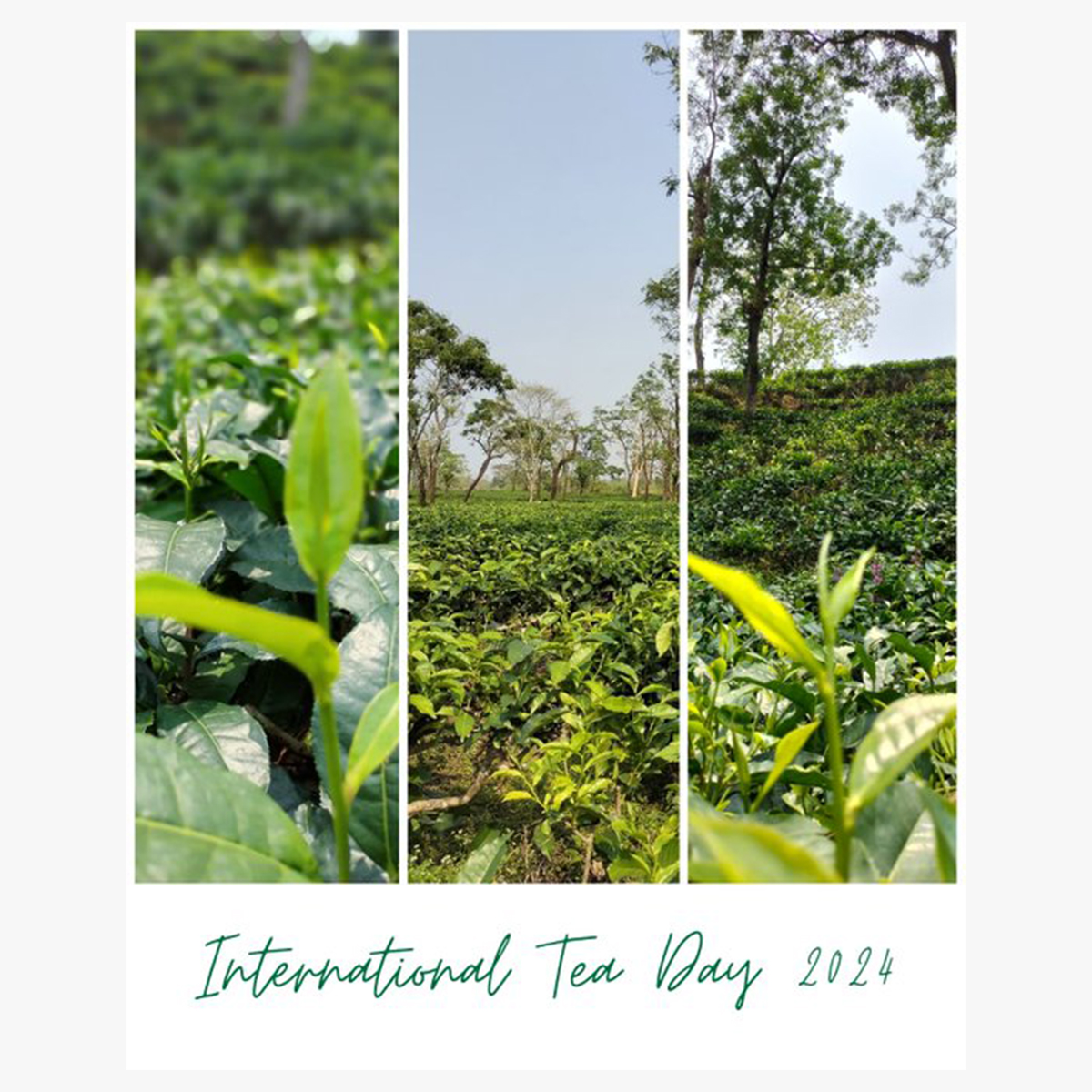





<h5 class=”mb-0″ style=”text-align: center; padding: 0.05px; color: #ffffff </h5>
Tea – All India Area and Production
|
|
2019-20 |
2020-21 | 2021-22 | 2022-23 | 2023-24 |
| Area (Million Hectares) |
0.63 | 0.56 | 0.60 | 0.61 | 0.61 |
| Production (Million Tonnes) |
1.39 | 1.25 | 1.34 | 1.36 | 1.38 |
Source: FAOSTAT ; Tea Board India, Union Ministry of Commerce & Industry, Govt. of India
https://www.teaboard.gov.in
Tea Exports from India
|
|
2019-20 |
2020-21 | 2021-22 |
2022-23 |
2023-24 |
|
Value |
5,851.11 | 5,603.50 | 5,596.67 | 6,582.34 | 6,155.39 |
Source: https://tradestat.commerce.gov.in, Department of Commerce, Ministry of Commerce and Industry, Govt. of India
India is among the top 3 tea exporters in the world accounting for around 17% of the world exports.
